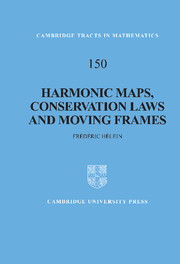3 - Compensations and exotic function spaces
Published online by Cambridge University Press: 13 August 2009
Summary
In the previous chapter we saw some regularity results for weak solutions of non-linear partial differential equations, whose proofs are based on the fact that, among the quadratic combinations of derivatives of functions, the Jacobian determinants have a subtle extra regularity. To our knowledge, this phenomenon was first used by Henry Wente [177]. It is analogous to the compensations that allow one to pass to the limit in certain non-linear combinations of weakly convergent sequences, and which were used by François Murat and Luc Tartar in their compensated compactness theory [122], [166].
Below, we follow the clear presentation, due to Haїm Brezis and Jean-Michel Coron [21], of H. Wente's discovery, and we also present some of its improvements. In particular, twenty years after H. Wente's result, works by Stefan Müller and also by Ronald Coifman, Pierre-Louis Lions, Yves Meyer and Stephen Semmes resulted in a finer study of these compensation phenomena, in particular using Hardy spaces.
Other function spaces, less known to specialists in partial differential equations, such as Lorentz spaces, have also proven to be useful. These developments are presented in sections 3.2 (Hardy spaces) and 3.3 (Lorentz spaces) of this chapter. As an example of the use of Hardy spaces we present the regularity theorem for weakly stationary maps, due to Lawrence C. Evans, in the last section of this chapter. Most of the analytic results of this chapter will be applied in chapters 4 and 5, to other geometrical settings.
- Type
- Chapter
- Information
- Harmonic Maps, Conservation Laws and Moving Frames , pp. 114 - 164Publisher: Cambridge University PressPrint publication year: 2002

